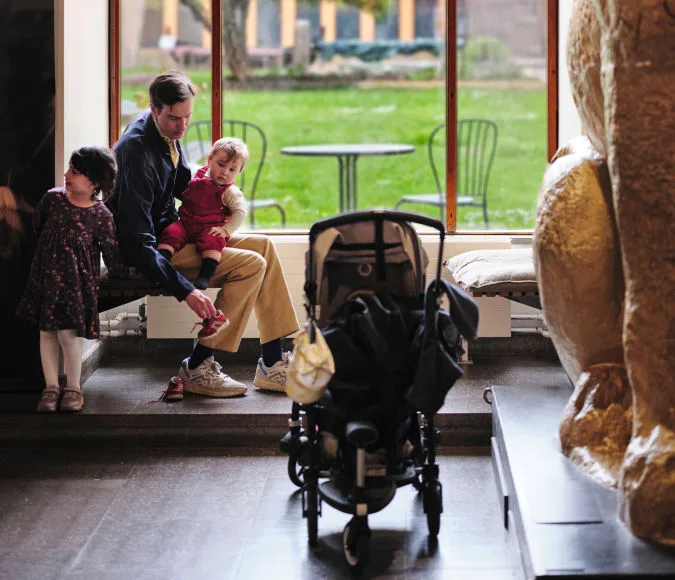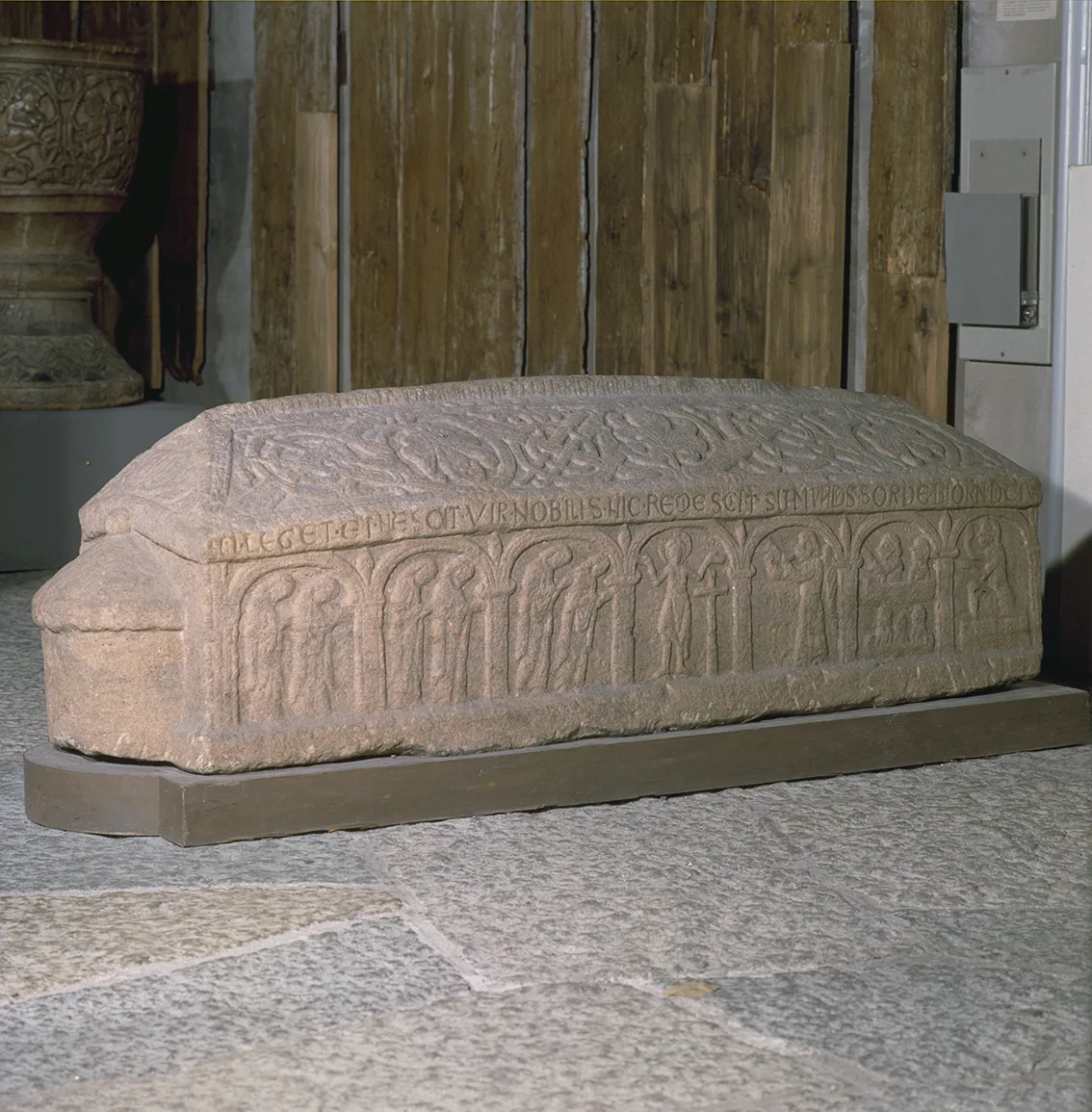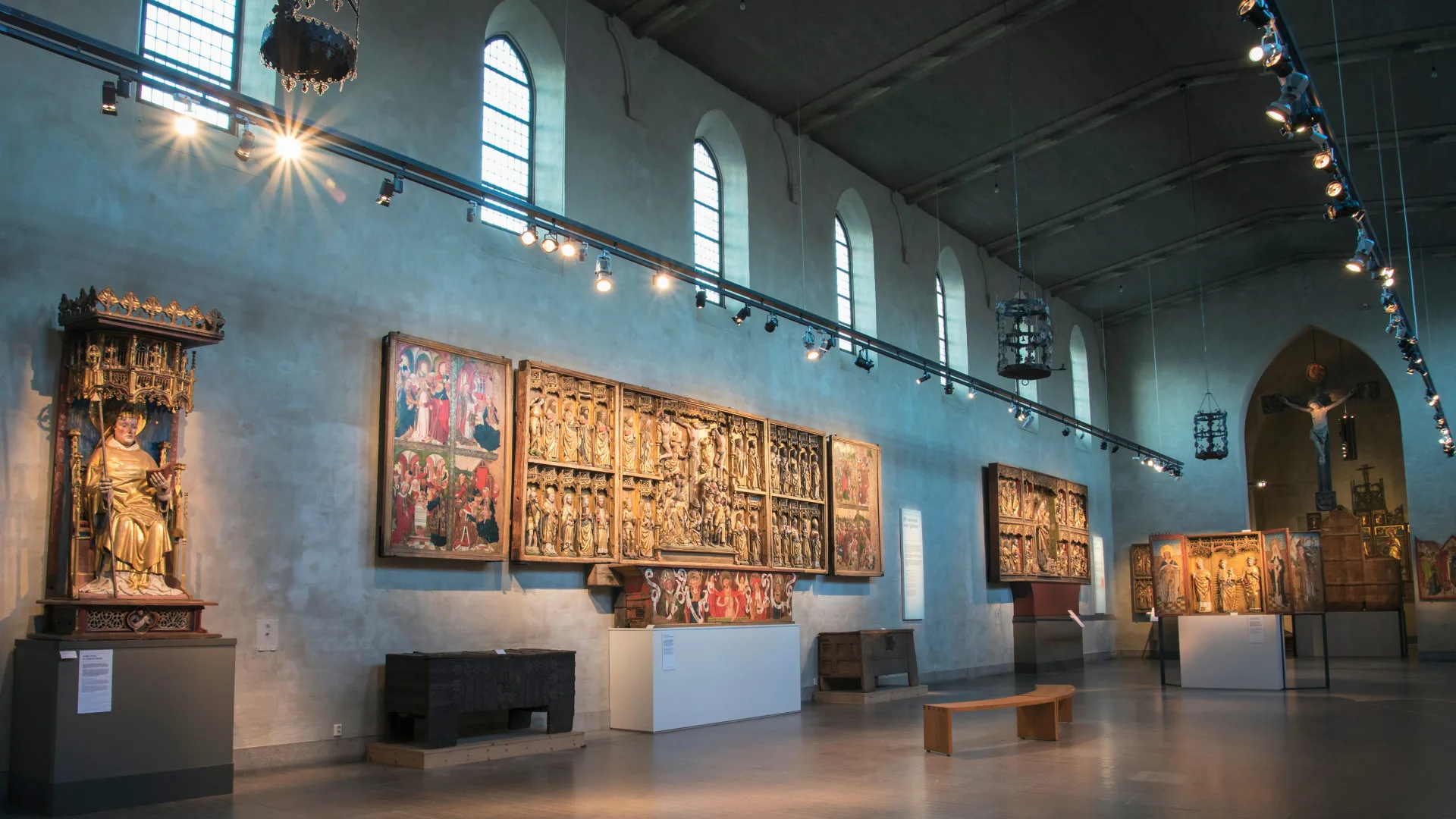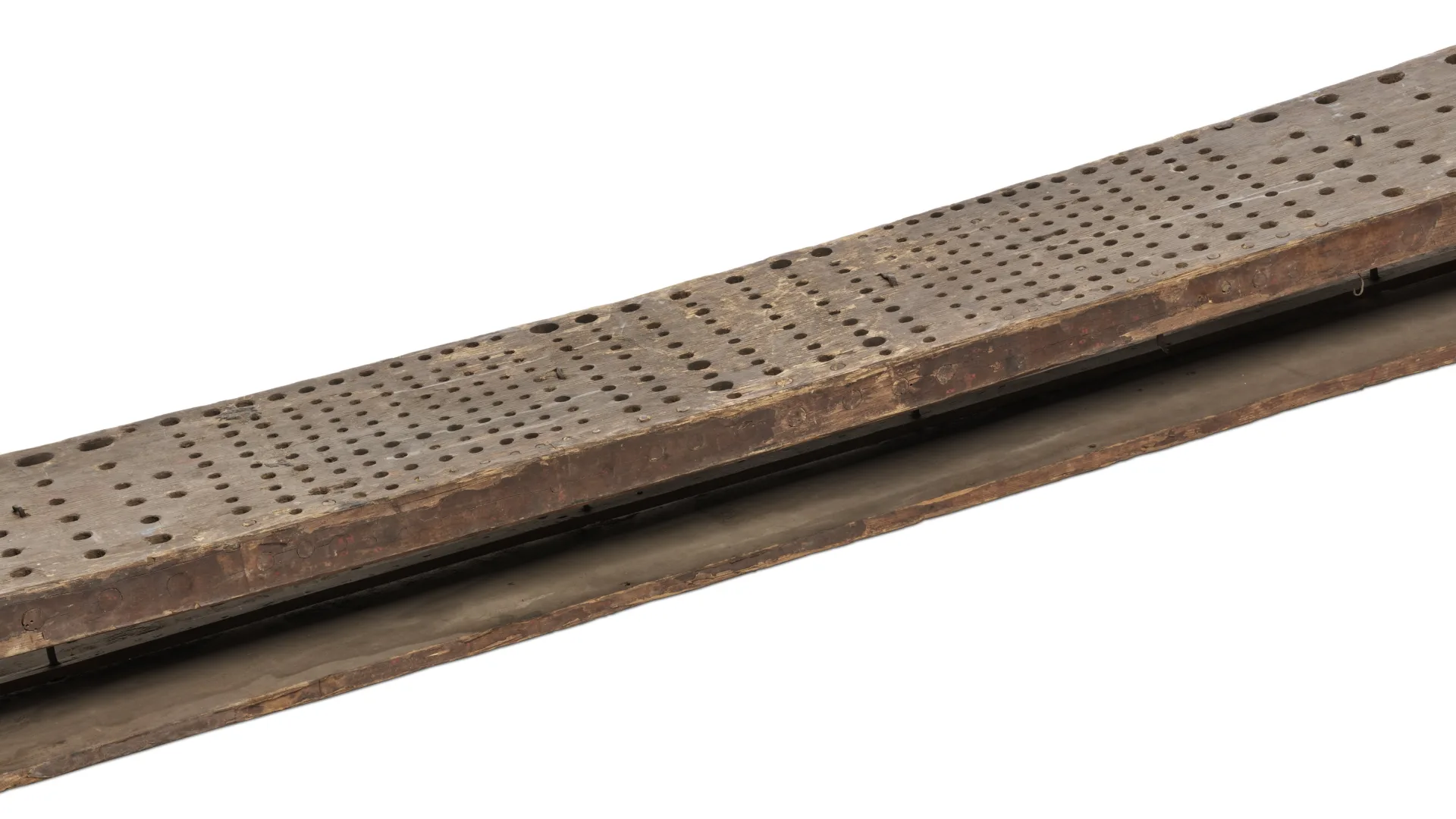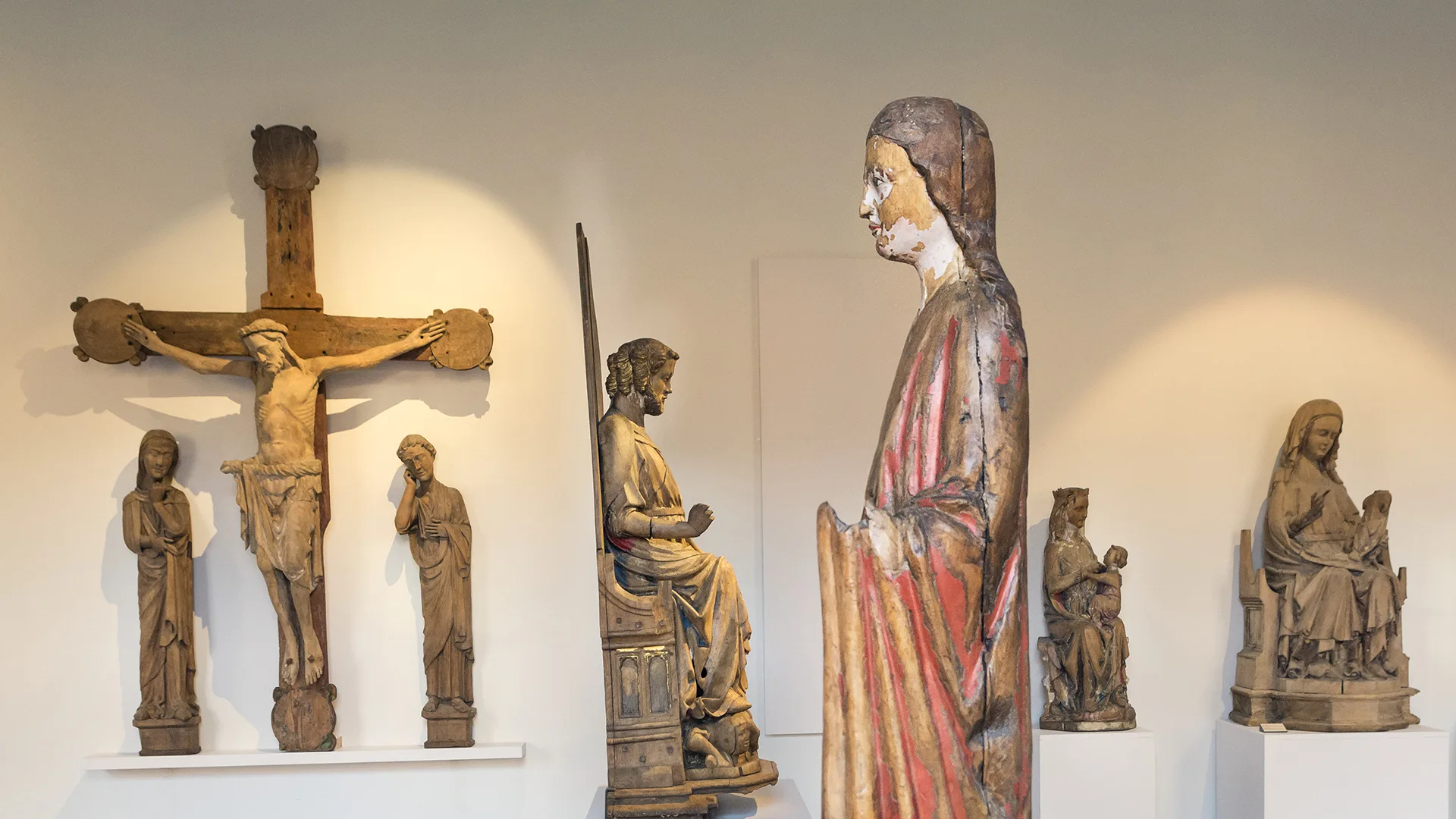
Medieval Art
Sweden was a Catholic country until the 16th century, when it broke with Rome and introduced Lutheran Protestantism. In the exhibition, walk through the history of art in Sweden from the 12th to the 16th century. See unique objects that were once part of Catholic church environments, collected by the Swedish History Museum starting from the late 19th century.
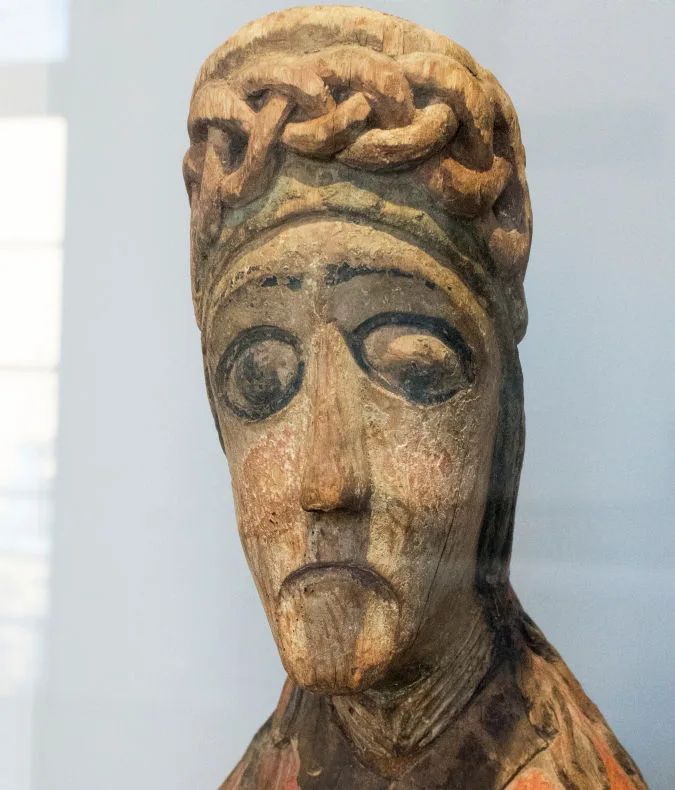
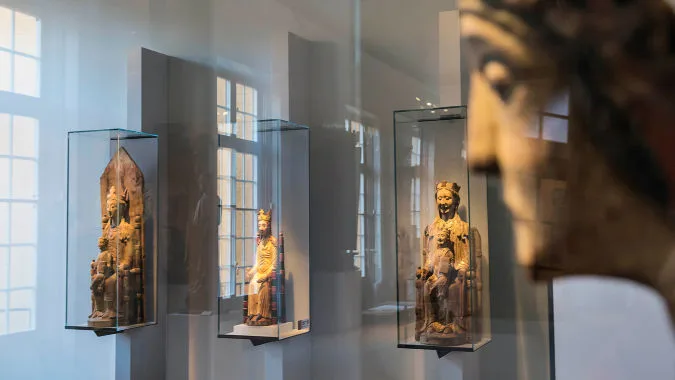
The Madonna from Mosjö. Photo: Katarina Nimmervoll, The Swedish History Museum/SHM (CC BY 4.0)
Christianity gave the Scandinavians a new understanding of the world. Life and death were explained in a new way, and artists portrayed the new themes. Their pictorial narratives often had to do with the Christian hope of resurrection and eternal life, as in the case of the Botkyrka tomb on display here. The stone sarcophagus was made for Björn, who built the first church at Botkyrka, near Stockholm, in the 12th century.
Every church had to have a baptismal font, a triumphal crucifix (rood) and carvings of saints. This made the Church a powerful force behind the setting up of art workshops and the importation of art from other countries.
What to know before your visit
- Admission: Free admission for children and youth aged 0–18. See admission fees for adults.
- Cloakroom: The cloakroom is located on the entrance floor. Here you will find lockers with locks. Small bags are allowed inside the exhibition areas. If you want to store larger suitcases, you can borrow a key at the information desk for the larger lockers in the cloakroom.
- Strollers: You are allowed to bring strollers inside the museum, except in the Gold Room.
Accessibility
We strive to continuously improve our accessibility to make it easy to visit us, both on-site and digitally. There are elevators to all floors, accessible toilets on all three levels, and disabled parking close to the entrance. Guide dogs are welcome.
Byzantine influence: AD 800–1150
In Swedish church art, there are a few examples of Byzantine-influenced works, one of which is the crucifix from Forsby in Västergötland. You can also see a baptismal font made of wood from Jämtland, which has motifs from Old Norse sagas. These were woven into the new religion, thereby acquiring a different meaning. The font has a prehistoric pictorial narrative about the heathen Gunnar in the snake pit, now with Christian overtones.
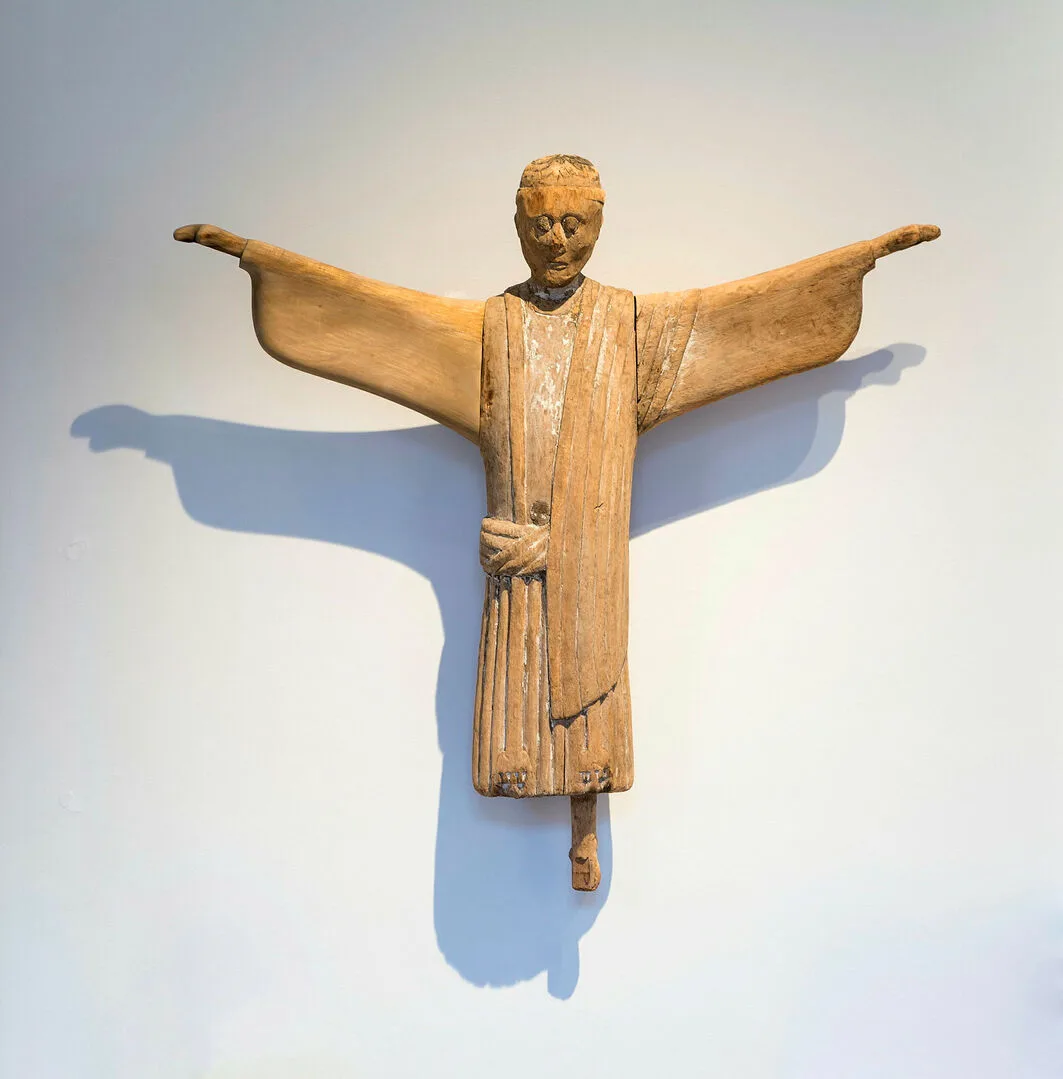
Crucifix
Reconstructed arm
On view at Historiska museet in the exhibition Medeltida konst
The Madonna from Mosjö in Närke dates from the 12th century and is one of the oldest of its kind. She is carved in lime wood and painted in thin, bright colours. She once had a Christ Child on her knee.
Romanesque style: 11th–12th century
The Romanesque art style takes its name from the architecture, whose forms were inherited from the Roman Empire. However, art from the Byzantine Empire also continued to influence its imagery.
During this period, artists and sculptors did not aim to depict figures realistically. The purpose of the sculptures was to show the divine – not reality.
Madonna with a hole in her head
One of the most fascinating and well-preserved Swedish church objects from the 12th century is a madonna sculpture from Viklau, Gotland, dated to the 1170s. The Viklau madonna represents the contemporary ideal of beauty and is executed in the same style as stone carvings in the great churches of Germany and France, such as the west front of Chartres Cathedral. The excellent state of preservation and fine colouring make her unique in Sweden.
During a conservation project in 2012–2013, a hole in the sculpture’s head was examined for the first time. Inside the head is a relic contained in a small cloth bag. Radiocarbon dating showed that the fabric dates from the mid-13th century, while the relic itself, a piece of bone, is 3,500 years old. Why such an ancient bone became a relic remains unknown.



Inside the Madonna’s head lies a small cloth bag containing a bone fragment. Photo: Katarina Nimmervoll and Gabriel Hildebrand, The Swedish History Museum/SHM (CC BY 4.0)
The exhibition also displays a magnificent altar and crucifix from the Swedish Middle Ages, from Broddetorp in Västergötland. The front of the altar, referred to as an antemensal, has been dated to the second half of the 12th century. It is made of gilt copper on a wooden base and decorated with rock crystals. In the centre is Christ in Majesty, with images of the apostles beneath him. The pictures on the left tell the story of the nativity, while those on the right show the arrest and death of Christ. An inscription along the top records that there were relics of the saints in the church. There is also an ornamental inscription, based on prototypes from Moslem art.
The small country church
At one end of the Gothic Hall you will find a small entrance to a reconstructed 12th century – Romanesque – church. This room contains original objects showing how medieval country churches were furnished. Altogether some 2,350 churches were built at this time. They were not identical, but they did all have much the same layout. All of them had a nave and a chancel. The chancel was at the east end and had either a straight end wall or else a rounded one, an apse. The priest celebrated mass at the altar which stood here. The altar could be decorated with an antemensal (decorated front). Later an altarpiece (reredos) was often fitted to it. Usually there would also be a relic here, often a tiny bone of a saint. The chancel had a seat for the priest and a bell which he would ring during mass at the point where the bread and wine were transubstantiated into the flesh and blood of Christ. The congregation were debarred from the chancel, which, accordingly, was screened off from the nave. The opening between chancel and nave is called the triumphal arch, and was hung with a crucifix – a triumphal crucifix.
The parishioners assembled in the nave of the church, the women standing on the north side, the men on the south. The baptismal font stood at the far western end of the church, just inside the door. The unbaptised child was considered impure and therefore should not be carried further inside the church than necessary. Baptism was the entry into the Christian faith. The nave had two altars against the chancel wall. The one on the women’s side was dedicated to the Virgin Mary, and that on the men’s side would be dedicated to a saint, often the patron saint of the church concerned.
Gothic style: 13th–14th century
New building techniques made it possible to construct ever taller churches with pointed vaults and large windows that let light flood into the church interior. People’s eyes and thoughts were meant to be directed towards the heavens – a reminder that the Kingdom of Heaven awaited after death. In the cities of Uppsala, Linköping, Växjö and Strängnäs, cathedrals were built or rebuilt in accordance with the new ideals.
The Gothic style brought a greater sense of humanity and naturalism to the imagery. Figures became more relaxed and softer in form, and Mary and the Christ Child were depicted with a more intimate relationship.
The symbolic soaring of the Gothic style heavenwards is expressed, for example, by the tall stained-glass windows of the cathedrals and the light admitted by them. The same thoughts influenced smaller churches in both town and country. In the exhibition you can see 13th and 14th century stained glass windows from country churches on Gotland.
The style spread rapidly across Europe. It reached Sweden, which had contacts with European art centres, around the year 1225.

Madonna with child from Edshult church
Towards the Renaissance: 15th–16th century
Art during the 15th and 16th centuries drew inspiration from the ideas of antiquity, with an increasing focus on the individual. Artists strove for greater realism, and the use of linear perspective – a painting technique to suggest distance – made it possible to create depth in images. These intellectual movements are known as the “Renaissance” (from the French renaissance, meaning rebirth). The ideas did not find as clear an expression in Sweden as they did, for example, in Italy. However, from the late 15th century onwards, an increasing number of altarpieces were imported from workshops in Brussels and Antwerp.
Altarpieces and figures of the saints played a very important part in churches. They can be likened to the picture books of our own time. Studying the elaborate and richly coloured adornments of these altarpieces and shrines, people could trace the Bible stories of Jesus, the Virgin Mary and the saints. Altarpieces and shrines were opened and closed on different occasions, and the themes and scenes displayed varied accordingly. They were an aid to devotion.
Several of the altarpieces in the museum's church-like Gothic Hall date from the late 14th century and 15th century. Many of them are influenced by the International Gothic style (also termed “the beautiful style” or “the soft style”) which evolved in northern Europe and Italy, presenting an idealised world of exaggerated beauty and luxury.
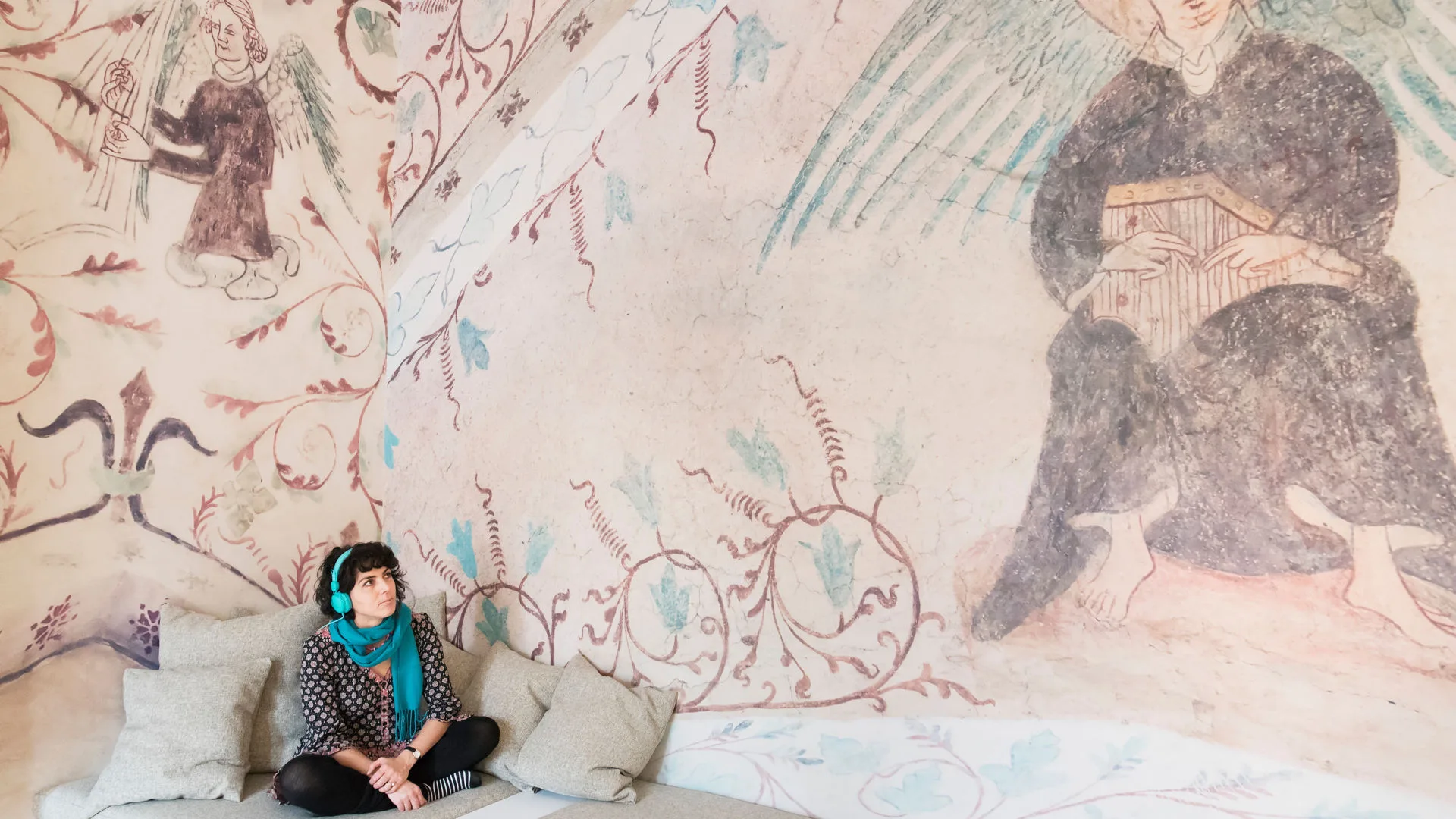
Medieval tones
Organ music and the chimes of church bells became important in the early Christian churches. Church bells became a concrete marker of the switch from the Norse beliefs of the Vikings to Christianity. The bells, described as “God’s trumpets”, could be heard at least ten kilometers away. The first bells came to Sweden with Catholic missionaries in the 9th century. The medieval bells in the exhibition all have fascinating tales to tell.
It was in the Middle Ages that the sound of the organ came to Swedish churches. In the exhibition, you can see two of the world’s oldest organs. Both are from Gotland; one is from Sundre and the other from Norrlanda. They are missing important parts such as pipes and bellows. However, the preserved part tell us how the early, medieval organs were built and how they worked. They also give us an idea of what the churches of the time might have sounded like. We don´t know what music was played on the organs. It wasn’t until the late 15th century that music written specially for the organ began to appear.
Later, church bells also took on a secular, practical function. If fire or a war broke out, they were used to raise the alarm.

